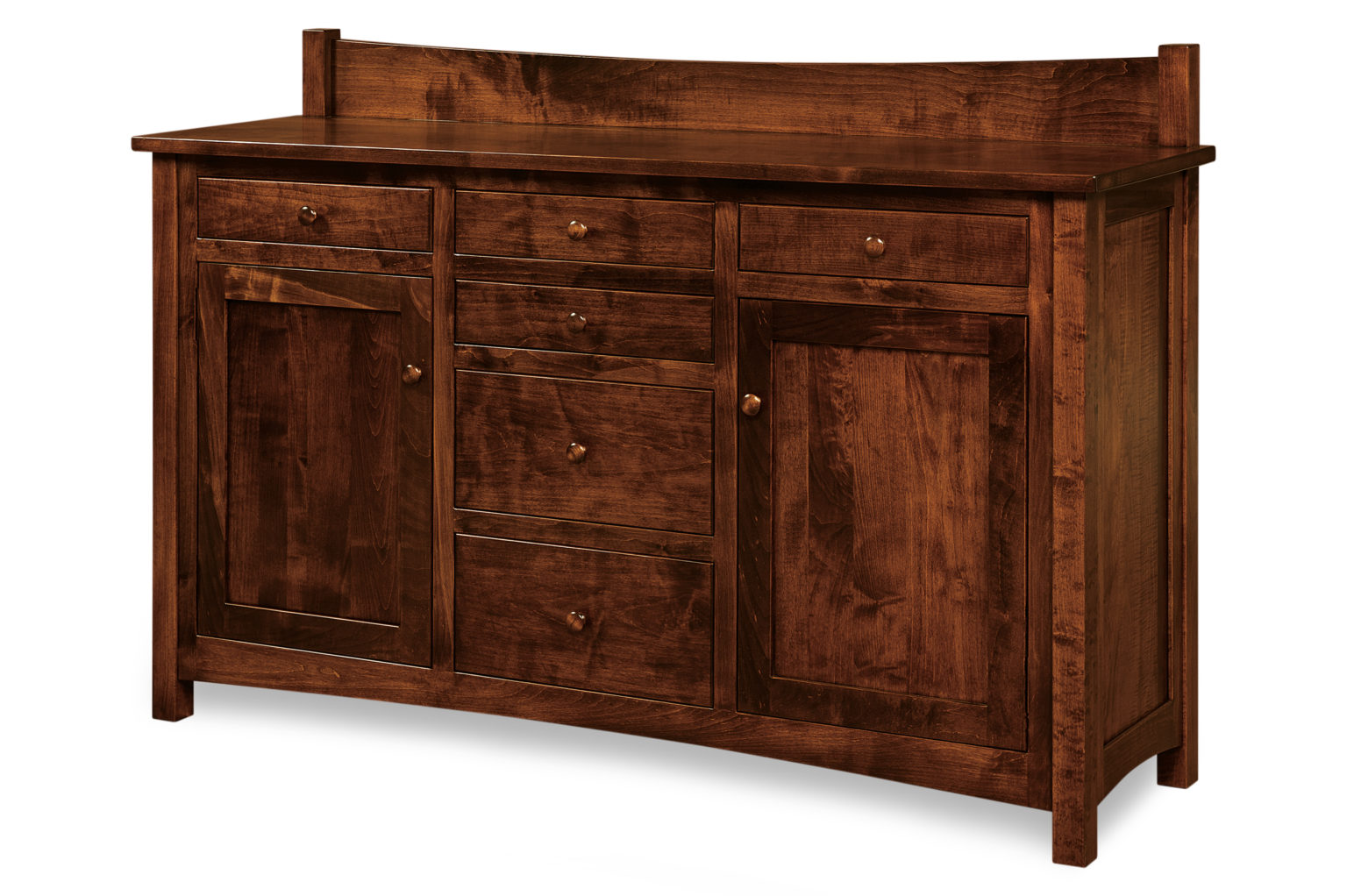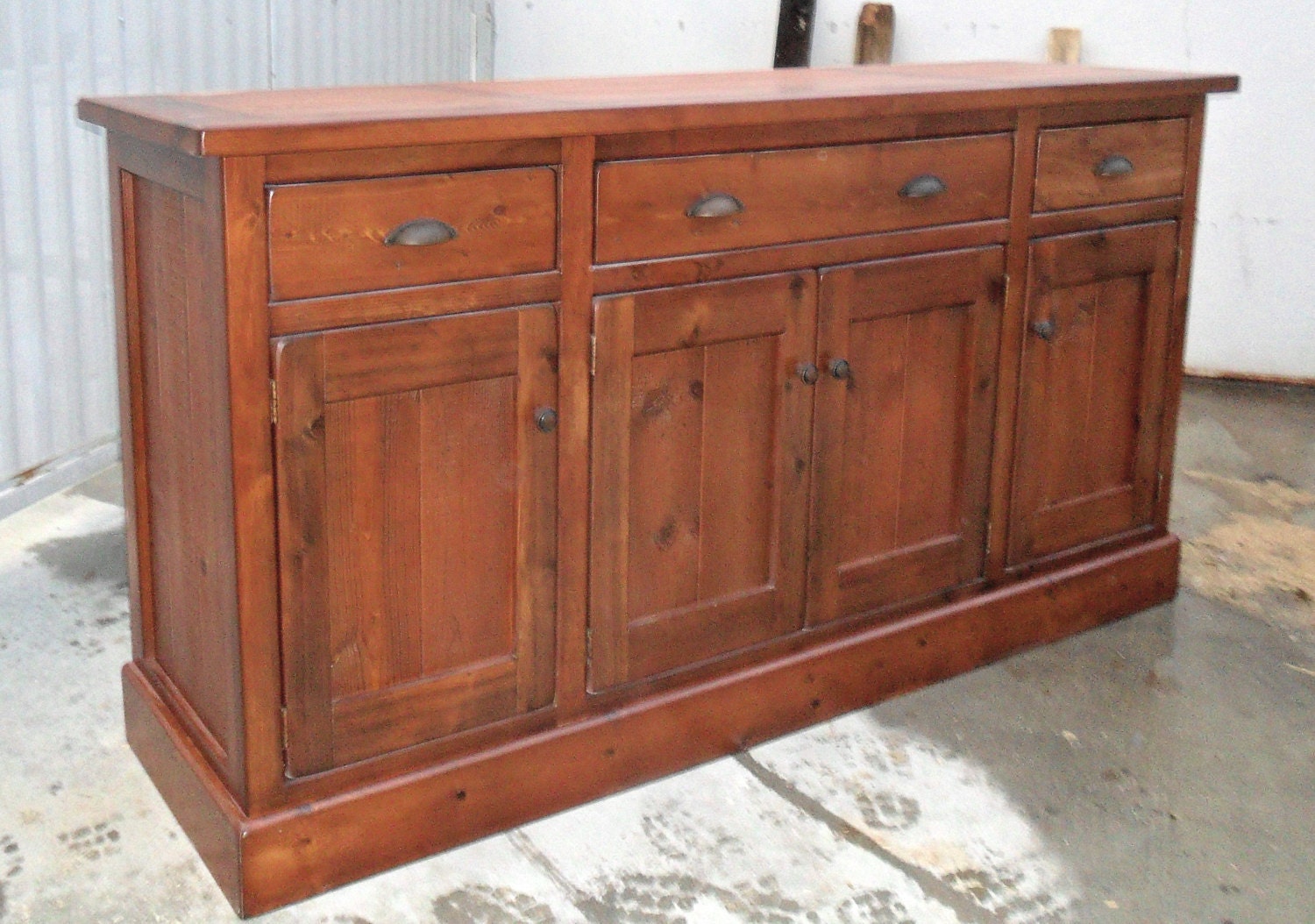Solid Wood Buffet Cabinet Styles & Designs

The enduring appeal of solid wood buffet cabinets lies not only in their functionality but also in their capacity to transform a space, whispering tales of craftsmanship and enduring style. From the stately grandeur of antique pieces to the sleek minimalism of contemporary designs, these cabinets offer a versatility that transcends fleeting trends. Their inherent strength and beauty, coupled with the potential for personalization, ensure they remain a coveted addition to any home.
Solid Wood Buffet Cabinet Styles and Their Historical Context
The following table details five distinct styles of solid wood buffet cabinets, highlighting their origins and defining characteristics. Each style reflects a specific historical period and aesthetic sensibility, offering a glimpse into the evolution of furniture design.
| Style | Origin | Key Features | Notable Characteristics |
|---|---|---|---|
| Queen Anne | Early 18th-century England | Cabrio legs, serpentine fronts, elaborate carvings, often inlaid with contrasting woods. | Displays a sense of opulence and refined elegance, characterized by its curved lines and ornate detailing. |
| Chippendale | Mid-18th-century England | Gothic, Chinese, and Rococo influences; often features fretwork, claw-and-ball feet, and intricate carvings. | Known for its eclecticism and masterful craftsmanship, showcasing a blend of diverse stylistic elements. |
| Federal | Late 18th-century America | Simple, elegant lines; often features inlaid veneers, reeded columns, and restrained ornamentation. | Reflects a neoclassical aesthetic, emphasizing symmetry, balance, and refined simplicity. |
| Mission | Early 20th-century America | Simple, sturdy construction; emphasizes natural wood grain; often features square lines, and minimal ornamentation. | Characterized by its honesty of materials and construction, reflecting the Arts and Crafts movement’s emphasis on functionality and handcrafted quality. |
| Shaker | 18th and 19th-century America | Simple, unadorned design; emphasis on functionality and craftsmanship; often features dovetail joinery and Shaker pegs. | Known for its clean lines, minimalist aesthetic, and enduring practicality. Reflects the Shaker community’s values of simplicity and utility. |
Modern, Rustic, and Traditional Solid Wood Buffet Cabinet Designs
The adaptability of solid wood allows for a wide range of design interpretations. Below are three distinct designs tailored to different interior styles.
Solid wood buffet cabinet – The following designs illustrate the versatility of solid wood in creating buffet cabinets suitable for diverse home styles. Each design emphasizes specific material choices and dimensions to achieve a cohesive aesthetic.
- Modern Design:
- Material: Light-colored oak or maple, with a sleek, clear lacquer finish.
- Dimensions: 72″W x 18″D x 36″H
- Design Elements: Clean lines, minimalist hardware (possibly integrated handles), open shelving, and a floating base for a contemporary feel.
- Rustic Design:
- Material: Reclaimed pine or barn wood, with a distressed finish.
- Dimensions: 60″W x 20″D x 34″H
- Design Elements: Visible wood grain, wrought iron hardware, slightly uneven surfaces, and a solid, sturdy construction to evoke a sense of age and character.
- Traditional Design:
- Material: Dark cherry or mahogany, with a polished finish.
- Dimensions: 78″W x 22″D x 38″H
- Design Elements: Detailed carvings, ornate hardware, multiple drawers and doors, and a classic silhouette.
Visual Appeal of a Shaker-Style Solid Wood Buffet Cabinet
The Shaker style embodies simplicity and functionality. Imagine a Shaker buffet cabinet crafted from cherry wood. The wood’s rich reddish-brown hue varies subtly, with lighter and darker streaks creating a captivating grain pattern. The grain itself is often straight and even, enhancing the clean lines of the design. The hardware is minimal—perhaps simple, understated knobs made of wood or brushed nickel—allowing the beauty of the wood to take center stage. The overall effect is one of understated elegance, a testament to the enduring appeal of simple, well-crafted design. The absence of excessive ornamentation allows the natural beauty of the wood and the precision of the joinery to shine through.
Solid Wood Buffet Cabinet Care & Maintenance

The enduring beauty of a solid wood buffet cabinet hinges not only on its initial craftsmanship but also on the diligent care it receives. A well-maintained piece becomes a legacy, a testament to time and quality, far outlasting fleeting trends. Neglect, however, can lead to irreversible damage, transforming a cherished heirloom into a faded memory. This section details the essential steps for preserving your solid wood buffet cabinet’s luster and longevity.
Cleaning and Maintaining a Solid Wood Buffet Cabinet
Regular cleaning is paramount to preventing the accumulation of dust, grime, and spills that can dull the wood’s finish and potentially cause damage. Consistent maintenance safeguards your investment and preserves the cabinet’s inherent beauty. The following steps Artikel a simple yet effective cleaning routine.
- Dust regularly: Use a soft, dry cloth or a feather duster to gently remove dust from all surfaces, paying close attention to crevices and carvings. Avoid harsh scrubbing or abrasive cloths.
- Clean spills immediately: Act swiftly to wipe up any spills, using a soft, damp cloth. Avoid letting liquids sit on the surface for extended periods.
- Polish occasionally: Apply a high-quality wood polish or furniture oil specifically designed for solid wood. Follow the manufacturer’s instructions carefully, and always test the product on an inconspicuous area first.
- Protect from direct sunlight: Prolonged exposure to direct sunlight can fade the wood’s color and cause cracking. Position the cabinet away from direct sunlight whenever possible.
- Use coasters and placemats: Always use coasters under drinks and placemats under hot dishes to protect the surface from water rings and heat damage.
- Avoid harsh chemicals: Never use abrasive cleaners, solvents, or bleach on your solid wood cabinet. These chemicals can damage the finish and the wood itself.
Common Problems and Their Solutions
Even with diligent care, some problems are inevitable. Understanding these issues and their solutions empowers you to address them effectively and prevent further damage.
- Scratches: Minor scratches can often be buffed out with a fine-grit sandpaper (2000-grit or higher) followed by polishing. For deeper scratches, consider using a wood filler that matches the cabinet’s color, followed by sanding and polishing.
- Water damage: Water rings or stains can sometimes be removed with a paste made of mayonnaise or toothpaste (non-gel). Apply the paste, let it sit for a few hours, then gently buff it off. For more severe water damage, professional restoration may be necessary.
- Dryness and cracking: If the wood feels dry or shows signs of cracking, apply a high-quality wood conditioner to restore moisture. This helps prevent further cracking and maintains the wood’s flexibility.
- Loose joints: Over time, wood can expand and contract, potentially leading to loose joints. Consult a professional woodworker or furniture repair specialist to address these issues.
Refinishing a Solid Wood Buffet Cabinet
Refinishing a solid wood buffet cabinet is a significant undertaking, requiring patience, precision, and the right tools. It’s a transformative process that can revitalize a worn piece, breathing new life into a cherished heirloom.
- Stripping the old finish: Use a chemical stripper following the manufacturer’s instructions carefully. Wear appropriate safety gear, including gloves, eye protection, and a respirator. Proper ventilation is crucial. Thoroughly remove all traces of the old finish using scrapers and steel wool.
- Sanding: Once the old finish is removed, sand the wood using progressively finer grits of sandpaper, starting with a coarser grit (80-100 grit) and working your way up to a finer grit (220 grit or higher). This smooths the surface and prepares it for the new finish.
- Applying the new finish: Whether you choose stain or paint, apply it evenly in thin coats, allowing each coat to dry completely before applying the next. Multiple thin coats are preferable to one thick coat, which can lead to drips and unevenness.
- Sealing: Once the stain or paint is dry, apply a clear sealant to protect the new finish and enhance its durability. Choose a sealant appropriate for the type of finish you applied.
Always wear appropriate safety gear, including gloves, eye protection, and a respirator, when working with chemical strippers, stains, paints, and sealants. Work in a well-ventilated area to avoid inhaling harmful fumes. Dispose of all chemicals properly according to local regulations.
